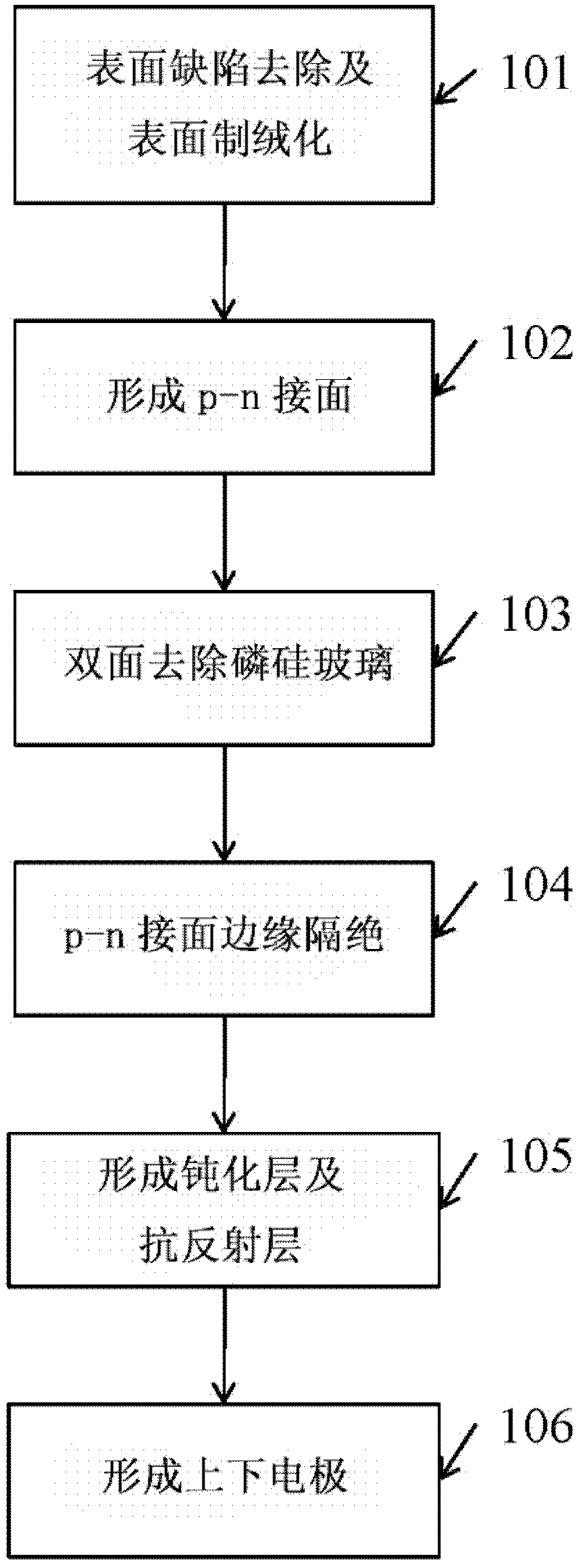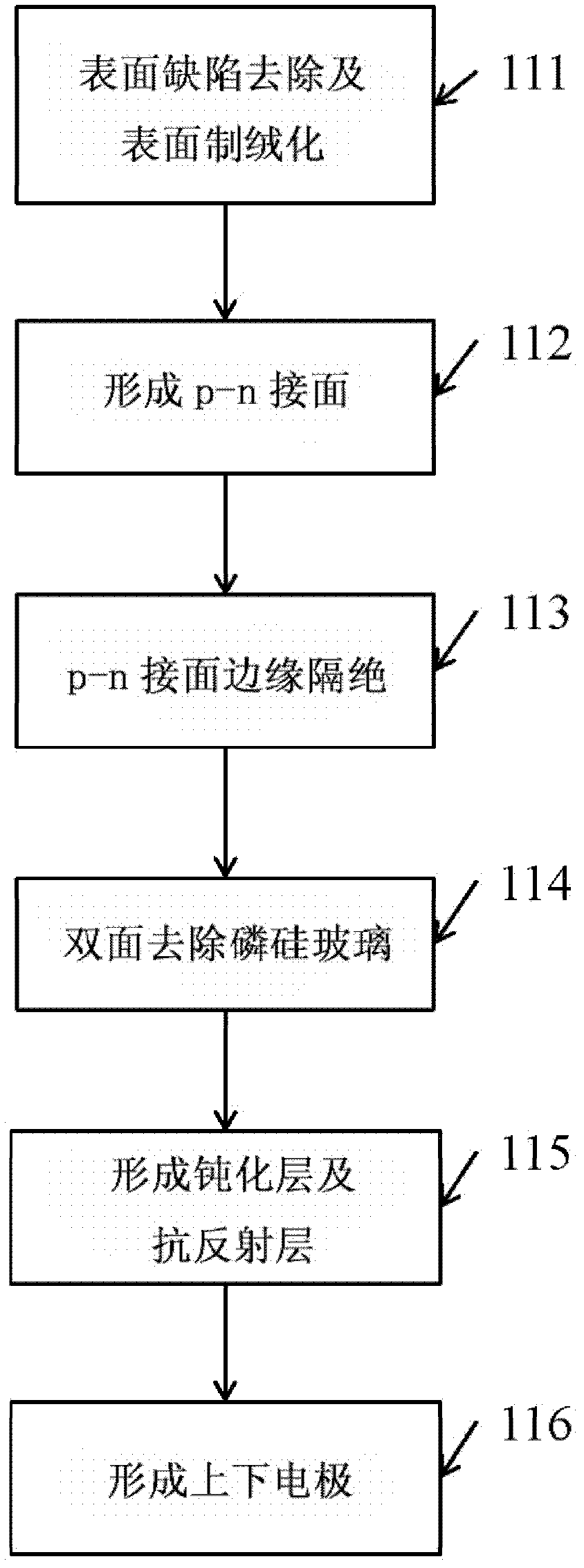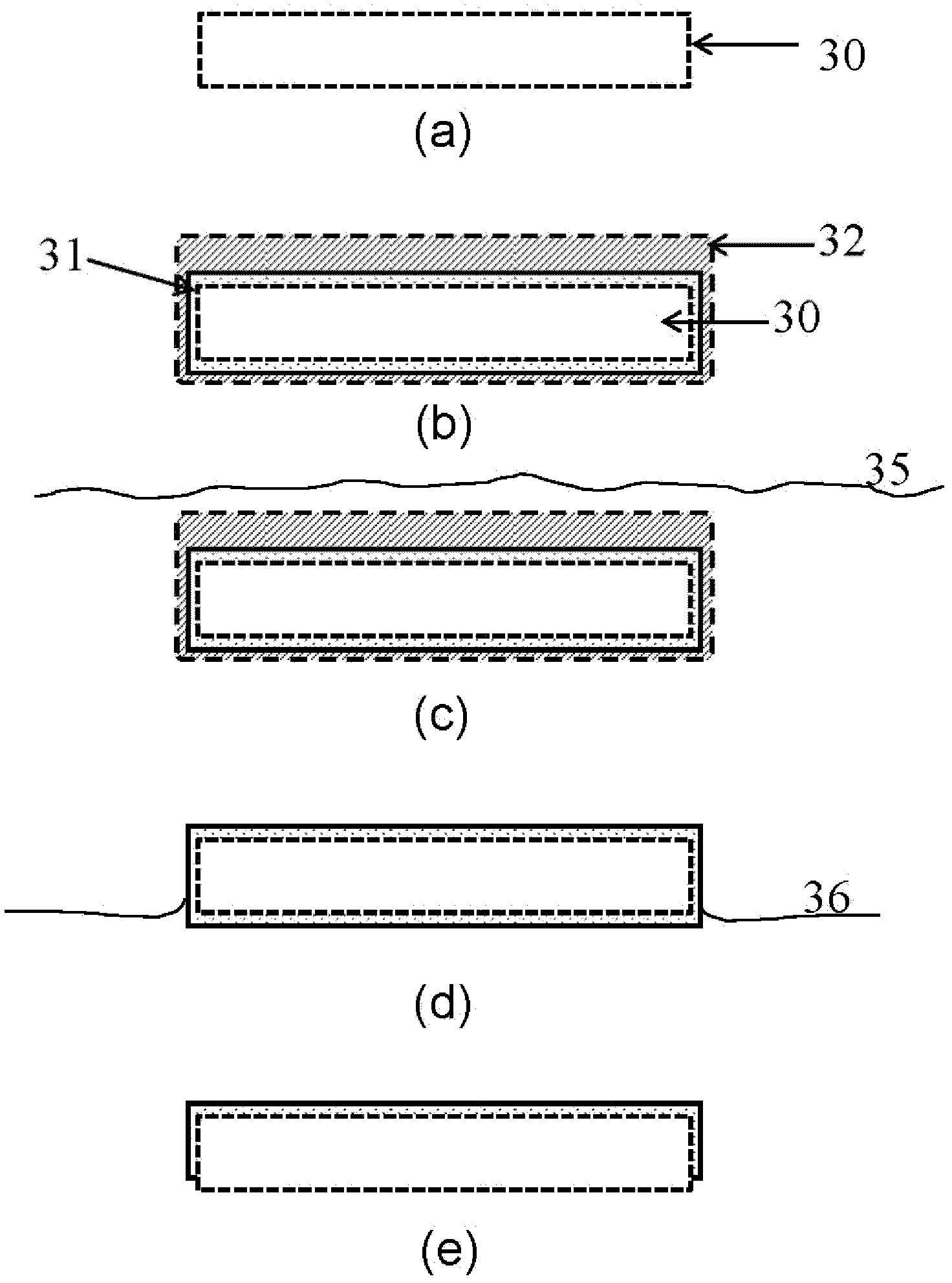Method for fabricating silicon wafer solar cell
A technology of solar cells and manufacturing methods, applied in the direction of final product manufacturing, sustainable manufacturing/processing, circuits, etc., to achieve the effects of improving photoelectric conversion efficiency, increasing production rate, and improving production yield
- Summary
- Abstract
- Description
- Claims
- Application Information
AI Technical Summary
Problems solved by technology
Method used
Image
Examples
Embodiment Construction
[0040] The foregoing and other technical contents, features and effects of the present invention will be clearly presented in the following detailed description of preferred embodiments with accompanying drawings. The directional terms mentioned in the following embodiments, such as: up, down, left, right, front or back, etc., are only directions referring to the attached drawings.
[0041] Traditional general silicon wafer solar cell manufacturing methods, such as figure 1 As shown, the p-n junction edge isolation (Edge Isolation, Edge Isolation) process in step 104 can adopt laser edge isolation (Laser Edge Isolation) technology or wet etching edge isolation technology. In step 104 , the edge isolation technology using the single-side wet etching technology can increase the photoelectric conversion rate by about 0.1% compared with the laser edge isolation technology. In addition, in the traditional single-sided wet etching edge isolation technology, etching a silicon layer ...
PUM
| Property | Measurement | Unit |
|---|---|---|
| thickness | aaaaa | aaaaa |
| thickness | aaaaa | aaaaa |
| thickness | aaaaa | aaaaa |
Abstract
Description
Claims
Application Information
 Login to View More
Login to View More - R&D
- Intellectual Property
- Life Sciences
- Materials
- Tech Scout
- Unparalleled Data Quality
- Higher Quality Content
- 60% Fewer Hallucinations
Browse by: Latest US Patents, China's latest patents, Technical Efficacy Thesaurus, Application Domain, Technology Topic, Popular Technical Reports.
© 2025 PatSnap. All rights reserved.Legal|Privacy policy|Modern Slavery Act Transparency Statement|Sitemap|About US| Contact US: help@patsnap.com



